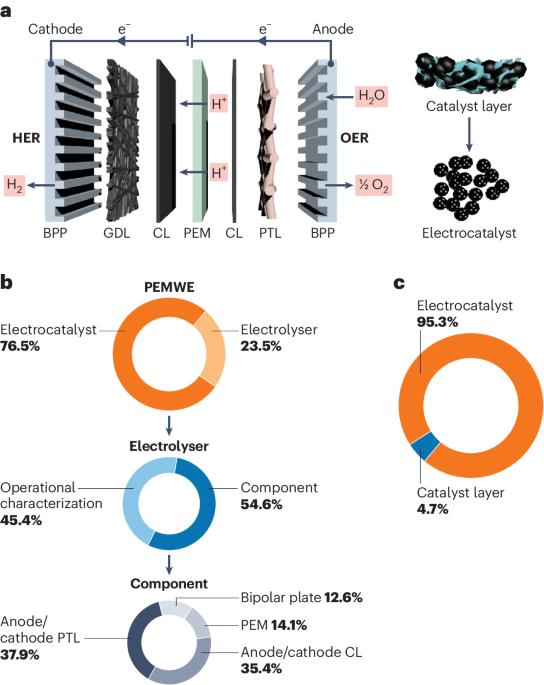质子交换膜水电解槽学术研究与工业需求之间的差距
IF 38.1
1区 材料科学
Q1 MATERIALS SCIENCE, MULTIDISCIPLINARY
引用次数: 0
摘要
在碳中和目标的推动下,质子交换膜水电解技术正在成为一项热门技术,因为它能够将波动的电力转化为绿色氢气。遗憾的是,尽管在基础研究方面投入了大量资源,但只有极少数研究成果成功转化为工业规模电解槽的开发。本文章由计算机程序翻译,如有差异,请以英文原文为准。


The gap between academic research on proton exchange membrane water electrolysers and industrial demands
Driven by carbon neutral targets, proton exchange membrane water electrolysis is becoming a hot technology due to its capability to convert fluctuating power into green hydrogen. Unfortunately, despite tremendous resources invested in fundamental research, only very few research outcomes have successfully translated into the development of industrial-scale electrolysers.
求助全文
通过发布文献求助,成功后即可免费获取论文全文。
去求助
来源期刊

Nature nanotechnology
工程技术-材料科学:综合
CiteScore
59.70
自引率
0.80%
发文量
196
审稿时长
4-8 weeks
期刊介绍:
Nature Nanotechnology is a prestigious journal that publishes high-quality papers in various areas of nanoscience and nanotechnology. The journal focuses on the design, characterization, and production of structures, devices, and systems that manipulate and control materials at atomic, molecular, and macromolecular scales. It encompasses both bottom-up and top-down approaches, as well as their combinations.
Furthermore, Nature Nanotechnology fosters the exchange of ideas among researchers from diverse disciplines such as chemistry, physics, material science, biomedical research, engineering, and more. It promotes collaboration at the forefront of this multidisciplinary field. The journal covers a wide range of topics, from fundamental research in physics, chemistry, and biology, including computational work and simulations, to the development of innovative devices and technologies for various industrial sectors such as information technology, medicine, manufacturing, high-performance materials, energy, and environmental technologies. It includes coverage of organic, inorganic, and hybrid materials.
 求助内容:
求助内容: 应助结果提醒方式:
应助结果提醒方式:


